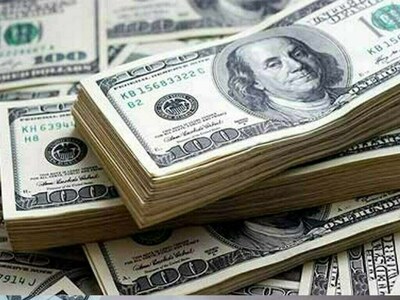Dollar Strengthens as Initial GDP Report Disappoints
NEW YORK: On Wednesday, the U.S. dollar experienced a surge against other major currencies following the release of economic data. A report indicated that the U.S. economy faced a contraction during the first quarter, performing below market predictions, though it surpassed some of the more pessimistic forecasts from major U.S. financial institutions.
The Commerce Department’s initial assessment revealed a 0.3% decrease in Gross Domestic Product (GDP) for the quarter. This downturn was largely attributed to a significant increase in imports, as businesses attempted to accelerate purchases in anticipation of the Trump administration’s tariff implementations on a wide range of goods.
Data revealed a 41.3% surge in pre-tariff imports during the initial three months of the year. Economists surveyed by Reuters had anticipated a 0.3% increase. Goldman Sachs had projected a 0.8% contraction, while J.P. Morgan had foreseen a more substantial decline of 1.75%.
The first-quarter GDP decline contrasts with the 2.4% growth observed in the fourth quarter. However, consumer spending continued its upward trend, albeit at a more gradual rate. Notably, consumer expenditure on services, particularly in healthcare, saw a 2.4% increase during the first quarter, indicating continued household resilience.
Oliver Pursche, senior vice president and advisor at Wealthspire Advisors, noted, “It’s important to realize that a large chunk of the fall in GDP is due to the sharp increase in imports, which take away from GDP growth.”
“And that’s probably due to the expectation of tariffs. So, if you were to normalize that, you end up with positive GDP growth for the quarter, but it certainly doesn’t bode well for Q2.”
In the wake of the data release, the dollar appreciated against the yen, trading 0.4% higher at 142.96 yen. Simultaneously, the euro weakened by 0.3% to $1.1351.
The dollar was heading towards its most significant monthly decline against the yen since July 2024. Conversely, the euro was on pace to record its largest monthly gain since November 2022.
Sterling declined by 0.6% to $1.3332. Throughout April, the British pound increased by 3.8%, marking its most substantial rise against the dollar in 2 1/2 years.
Furthermore, a separate report indicating a rise in U.S. consumer spending and income, along with a deceleration in annual inflation, provided additional support to the dollar. The figures showed a 0.5% increase in U.S. personal income for March and a 0.7% rise in spending, both surpassing economists’ expectations in a Reuters survey.
Over the 12 months leading up to March, the Personal Consumption Expenditures (PCE) Price Index, the Federal Reserve’s preferred inflation indicator, rose by 2.3%, a decrease from the 2.7% recorded in February. Annual core inflation also showed moderation, increasing by 2.6% after a 3.0% rise in February. On a monthly basis, both the headline and core PCE figures remained consistent with the previous month. According to Harry Chambers, assistant economist at Capital Economics, “The almost unchanged level of core PCE prices in March is welcome news but, given the data precede the implementation of broad-based tariffs, core inflation will inevitably rebound sharply in the coming months.”



Comments (0)
No comments yet. Be the first to comment!
Leave a Comment